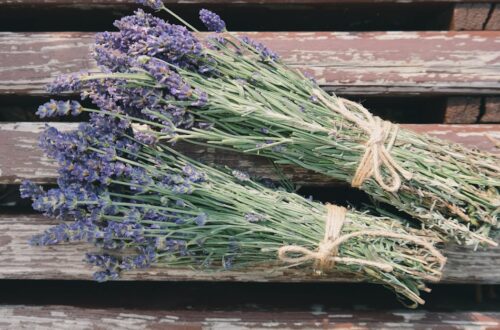Have you ever considered growing echinacea from seed? This stunning perennial is not only a beautiful addition to any garden but also boasts medicinal properties that can boost your immune system. In this complete guide, we will delve into everything you need to know about growing echinacea from seed, from selecting the right seeds to nurturing your plants into maturity. Whether you’re an experienced gardener or a beginner, our insights will ensure a rewarding gardening experience.
Choosing the Right Echinacea Seeds
When it comes to cultivating echinacea successfully, selecting the right seeds is crucial. Look for high-quality, germination-tested seeds from reputable sources. Consider choosing varieties like Echinacea purpurea or Echinacea angustifolia, known for their hardiness and stunning blooms. These species thrive in various conditions and attract pollinators, enhancing your garden’s biodiversity. Ensure the seeds are fresh, as older seeds may have lower germination rates. For optimal growth, research local climate conditions and soil types, which can significantly affect seed performance. Once you’ve selected your seeds, prepare to follow the essential steps for growing echinacea from seed efficiently. By making informed choices now, you’ll enjoy vibrant flowers and a fruitful garden in no time!

Preparing the Soil for Planting
To ensure successful echinacea cultivation, begin with proper soil preparation. Start by selecting a location that receives full sunlight and has well-draining soil. Test the soil pH, which should ideally range between 6.0 and 7.0. Add organic matter, such as compost, to enrich the soil and enhance drainage. This step not only provides essential nutrients but also encourages beneficial microbial activity. Before planting, rake the soil to create a fine seedbed, breaking up any clumps. Following these practices is vital for growing echinacea from seed, leading to healthier plants and a vibrant garden. Don’t forget to water the soil after planting to help the seeds establish quickly!

Sowing Echinacea Seeds
Sowing echinacea seeds requires attention to detail for optimal germination. Start by preparing a well-drained seedbed in either spring or fall. Lightly sow the seeds and cover them with a thin layer of soil, ensuring they receive plenty of sunlight during the day. To improve germination rates, consider soaking the seeds in water for 24 hours prior to planting. Studies show that seeds exposed to cold temperatures for a period can increase the likelihood of sprouting. Once established, these hardy perennials will produce vibrant flowers that not only beautify your garden but also attract beneficial pollinators. Begin your journey towards growing echinacea from seed today!

Watering and Care After Planting
After planting echinacea seeds, the first step to thriving plants is consistent watering. Keep the soil moist but not overly saturated, as echinacea prefers well-drained conditions. Watering should be done at the base of the plant to avoid fungal diseases and promote strong root development.
Additionally, once seedlings emerge, provide ample sunlight; they thrive in full sun environments. Monitor for pests such as aphids, which can affect growth. Regularly check the soil for nutrient requirements—adding organic compost can boost plant vitality. Echinacea is typically drought-resistant once established, but during initial growth, ensure they get enough water. With proper care, you can enjoy these resilient perennials for years to come!

Transplanting Echinacea Seedlings
Transplanting echinacea seedlings is a crucial step in their growth, ensuring they thrive when moved outdoors. Begin this process when your seedlings are about 4-6 inches tall and have developed several sets of true leaves. Prepare your garden bed with well-draining soil rich in organic matter. Before transplantation, harden off your seedlings by gradually exposing them to outdoor conditions over a week. This acclimatization helps reduce transplant shock. Space the seedlings about 18 inches apart to allow for optimal airflow and growth. Water them thoroughly after planting, and maintain moisture during their establishment phase. Following these steps will lead to healthy, robust echinacea plants that can bloom beautifully in your garden or landscape.

Common Pests and Problems
When cultivating echinacea, it’s vital to stay alert for common pests and problems that can affect plant health. Aphids and spider mites are notorious for targeting young plants, leading to stunted growth and leaf discoloration. Use neem oil or insecticidal soap to effectively combat these pests. Furthermore, root rot can arise from overwatering or poor drainage, so ensure that your soil allows for adequate moisture control. Regularly inspecting your echinacea plants will help you identify issues early, enabling timely interventions. For optimal growth, always maintain an organic approach when dealing with pests, ensuring that the plants thrive in a healthy ecosystem. Stay proactive about your patch by learning to spot these common issues early!

Harvesting and Using Echinacea
Harvesting echinacea is a vital step to ensure you reap its full potential. Typically, the plants are ready for harvest in late summer to early fall when the flowers are in full bloom. At this stage, the petals are vibrant, and the center cone is filled with seeds, making it ideal for collecting. Using sharp scissors, cut the stems, leaving about a foot of plant height for further growth. After harvesting, the echinacea can be dried and stored for tea or tinctures. Did you know that echinacea can help boost your immune system? Leveraging the medicinal properties of this herb can enhance your wellbeing. Try incorporating these harvested echinacea elements into your daily routine for optimal health benefits!

Conclusion
In conclusion, successfully growing echinacea from seed is a fulfilling process that not only beautifies your garden but also provides potential health benefits. By following the steps outlined in this guide, you’ll be well on your way to cultivating healthy echinacea plants that flourish season after season.






